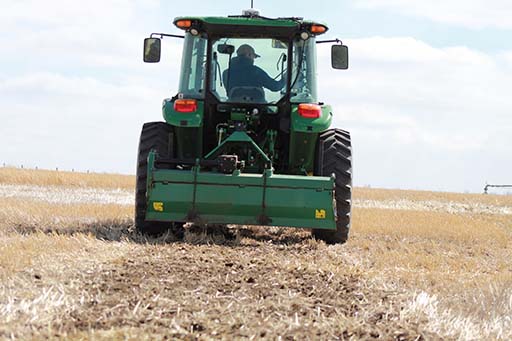Zero and minimum till fields can experience trash build up that affects seed to soil contact in the spring.
Strip tillage may provide some benefits in this environment, so Farming Smarter has a research project investigating the pros and cons of strip tilling fields.
"Strip tilling breaks up the thick layer of residue on top of the soil. This exposes the soil and allows you to do something with it. Such as making narrow rows where you are going to plant for the year. If you do not get good seed to soil contact, then you will have issues with your planting," says Mike Gretzinger Farming Smarter research coordinator.

"The idea of strip tilling heavy trash is that it is supposed to be the best of both worlds and that's the philosophy. The beneficial aspects are that it moves the trash around so the sun can warm up the soil faster than with no tillage. You have more precision when applying seed or fertilizer, it saves time, and improves soil health," Gretzinger says.

The biggest risk with strip tilling is that soil erosion that can occur. At any time, the wind could pick up and blow around your soil. There could also be a rainstorm right after you strip till, and it could move your soil and trash all over the place. Many soil erosion possibilities exist right after you strip till.
When it comes to strip tillage it depends on your situation and what time of year you plan to strip till. Some decide to strip till before seeding and some after seeding. Both times have pros and cons.
For some people strip tilling isn't an option and combining or mowing down will be beneficial to the ranchers to use the straw for cattle.
Below is a video and some articles to read to learn more about strip tilling and Farming Smarter projects investigating its potential uses in low till environments.
